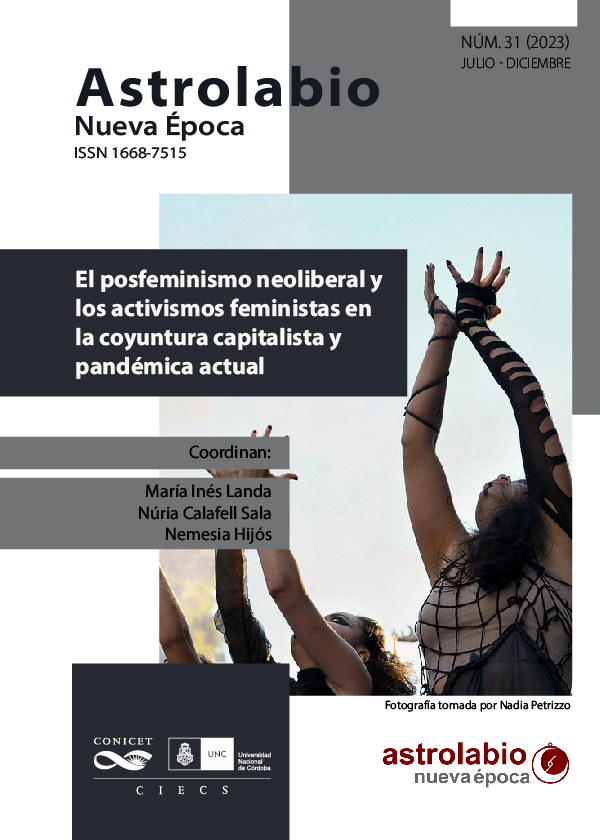Fertility Probabilistic Projections in Argentina
Main Article Content
Abstract
In recent years, a significant number of demographic statistical methods have been proposed. Most of them have been developed with the purpose of forecasting demographic components or indicators derived from the assumptions of an underlying model. The present work aims to carry out a comprehensive comparative exercise through the estimation and forecast of fertility based on three proposals —classic forecast methods such as ARIMA models and exponential smoothing, functional data models (FDM) and Bayesian hierarchical models (BHM)— as a first step towards the study of population projections derived from each of method, using data from Argentina. The exercise has as final objective the estimation of mortality and fertility through the three aforementioned methods to later integrate them into population projections.
Downloads
Article Details

This work is licensed under a Creative Commons Attribution-NonCommercial-ShareAlike 4.0 International License.
Astrolabio, Nueva Época está protegida bajo licencia Licencia Creative Commons Atribución-NoComercial-CompartirIgual 4.0 Internacional. La propiedad intelectual de los artículos pertenece a los autores y los derechos de edición y publicación a la revista. Los artículos publicados podrán ser usados libremente para propósitos científicos y académicos, siempre y cuando se realice una correcta citación de los mismos. Cualquier persona física o jurídica que desee reimprimir parte o la totalidad de algún artículo, deberá obtener permiso escrito de los editores de Astrolabio Nueva Época, quien lo otorgará con el consentimiento del autor.
References
ALKEMA, Leontine; RAFTERY, Adrian E.; GERLAND, Patrick; CLARK, Samuel J.; PELLETIER, François; BUETTNER, Thomas; y HEILIG, Gerhard K. (2011). “Probabilistic projections of the total fertility rate for all countries”. Demography, 48-3, 815-839.
BOX, George E. P. y COX, David R. (1964). “An analysis of transformations”. Journal of the Royal Statistical Society. Series B (Methodological), 26-2, 211-252.
BOX, George E. P. y JENKINS, Gwilym M. (1976). Time Series Analysis: Forecasting and Control. San Francisco: HoldenDay.
BRILLINGER, David R. (1986). “The natural variability of vital rates and associated statistics”. Biometrics, 42, 693-734.
CALDWELL, John C. (1982). Theory of Fertility Decline. London: Academic Press.
CHACKIEL, Juan y SCHKOLNIK, Susana. (2004). América Latina: los sectores rezagados en la transición de la fecundidad. En AA. VV., La fecundidad en América Latina. ¿Transición o revolución?, pp. 51-73. Santiago de Chile: Cepal.
CLELAND, John y WILSON, Christopher. (1987). “Demand Theories of the Fertility Transition: An Iconoclastic View”. Population Studies, 41-1, 5-30.
CEPAL (Comisión Económica para América Latina y el Caribe). (2021). Estimaciones y proyecciones: archivos excel. Disponible en: https://www.cepal.org/es/temas/proyecciones-demograficas/estimaciones-proyecciones-excel [consulta: 10 de enero de 2021].
EASTERLIN, Robert A. (1975). “An Economic Framework for Fertility Analysis”. Studies in Family Planning, 6, 54-63.
EASTERLIN, Richard A. (1978). The Economics and Sociology of Fertility: A Synthesis. En C. Tilly (ed.), Historical Studies of Changing Fertility, pp. 57-133. Princeton: Princeton University Press.
EASTERLIN, Richard A. y CRIMMINS, Eileen N. (1985). The Fertility Revolution: A Demand-Supply Analysis. Chicago: University of Chicago Press.
ERBAS, Bircan; HYNDMAN, Rob; y GERTIG, Dorota. (2007). “Forecasting age-specific breast cancer mortality using functional data models”. Statistics in Medicine, 2-26, 458-470.
HE, Xuming y NG, Pin. (1999). “Cobs: qualitatively constrained smoothing via linear programming”. Computational Statistics, 14, 315-337.
HE, Xuming y SHI, Peide. (1996). “Monotone b spline smoothing.” Journal of the American Statistical Asociation, 93, 643-650.
HYNDMAN, Rob y BOOTH, Heather. (2008): “Stochastic Population Forecasting Using Functional Data Models for Mortality, Fertility and Migration”. International Journal of Forecasting, 24,323-342.
HYNDMAN, Rob; KOEHLER, Anne; ORD, Keith; y SNYDER, Ralph. (2008). Forecasting with Exponential Smoothing: The State Space Approach. Heidelberg: Springer.
HYNDMAN, Rob y ULLAH, Shahid M. (2007). “Robust forecasting of mortality and fertility rates: A functional data approach”. Computational Statistics and Data Analysis, 51, 4.942- 4.956.
INDEC (Instituto Nacional de Estadísticas y Censos). (2013). Estimaciones y proyecciones de población 2010-2040. Total del país. Buenos Aires: Autor. Disponible en: https://www.indec.gob.ar/ftp/cuadros/publicaciones/proyeccionesyestimaciones_nac_2010_2040.pdf [consulta: noviembre de 2022].
KEILMAN, Nico; PHAM, Dinh Q.; y HETLAND, Arve. (2002). “Why population forecasts should be probabilistic - illustrated by the case of Norway”. Demographic Research, 6-15, 409-454.
LEE, Ronald D. y CARTER, Lawrence R. (1992). “Modeling and Forecasting U. S. Mortality”. Journal of the American Statistical Association, 87-419, 659-671.
LESTHAEGHE, Ron y SURKYN, Johan. (1988). “Cultural Dynamics and Economic Theories of Fertility Change”. Population and Development Review, 14-1, 1-45.
LESTHAEGHE, Ron y WILSON, Chris. (1986). Modes of Production, Secularization, and the Pace of the Fertility Decline in Western Europe, 1870-1930. En Ansley J. Coale y Susan C. Watkins (eds.), The Decline of Fertility in Europe, pp. 261-292. Princeton: Princeton University Press.
OPPENHEIM MASON, Karen. (1997). “Explaining Fertility Transitions”. Demography, 34-4, pp. 443-454. Disponible en: https://www.jstor.org/stable/3038299 [consulta: noviembre de 2022].
NOTESTEIN, F. (1953). “Economic Problems of Population Change”. Proceedings of the Eight International Conference of Agricultural Economics, pp. 13-31. London: Oxford University Press.
PANTELIDES, Edith A. (1983). La transición demográfica argentina: un modelo no ortodoxo. Buenos Aires: CENEP.
SEVCÍKOVÁ, Hana; ALKEMA, Leontine y RAFTERY, Adrian E. (2008). BayesTFR: Bayesian Fertility Projection, R package version 6.2. Disponible en: https://cran.r-project.org/web/packages/bayesTFR/bayesTFR.pdf [consulta 30 de junio de 2021].
THOMPSON, Warren S. (1930). Population Problems. New York: McGraw-Hill.
UNITED NATIONS. (2019). World Population Prospects. The 2019 Revision. Disponible en: https://population.un.org/wpp [consulta: 30 de junio de 2020].
WOOD, Simon. (2003). “Thin plate regression splines”. Journal of the Royal Statistical Society, 65-1, 95-114.

